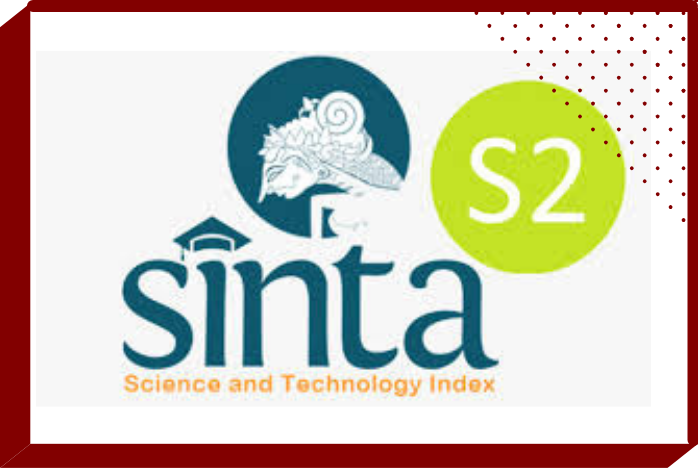Sastra dan Sastrawan Jawa Timur di Era Pandemi: Tinjauan Respons Pembaca
 Abstract views: 281
,
Abstract views: 281
,
 PDF downloads: 254
PDF downloads: 254
Abstract
This study aims to explore East Javanese literature and writers during the pandemic through the perspective of reader response. This study uses an interpretive qualitative approach. The informants in this study were professional literary readers and ordinary literary readers. as many as 84 respondents have responded to the Indonesian Literature Reader form in East Java from various categories with a distribution of 66.3 percent of undergraduate students; 18.8 percent of Lecturers; 8.4 percent of Teachers; 4.2 percent of General; Researchers and Doctoral students got the same result, namely 1.1 percent. Data collection techniques were carried out by means of interviews and questionnaires. The results of the study show the following. First, it represents the psychology of the author.” 58.9 percent of respondents answered that the literary work represented the psychology of the author, 28.4 percent did not know and 12.6 percent did not. Second, the literary work represents the author's psychology, as many as 58.9 percent answered yes. While at least answering the literary work does not represent the psychology of the author, which is 12.6 percent. Third, the psychology understood by the reader, namely Personality Psychology (existential, behavioral, psychoanalytic, humanistic) with 28.4 percent answered yes, while at least 1.1 percent answered Masculinity Psychology and Mass Psychology. Indonesian writers in East Java tend to bring up Javanese human psychology in their literary works?” Of these questions, 52.6 percent of respondents answered that Indonesian writers in East Java tended to bring up Javanese human psychology in their literary works, as many as 42.1 percent answered maybe and 5.3 percent answered that Indonesian writers in East Java tended not to bring up Javanese human psychology in their literature. his literary works.
Downloads
References
Ahmadi, A. (2021). The traces of oppression and trauma to ethnic minorities in Indonesia who experienced rape on the 12 May 1998 tragedy: A review of literature. Journal of Ethnic and Cultural Studies, 8(2), 126-144.
Ahmadi, A., Darni, Murdiyanto, & Hariyati, N. R. (2019). Reader’s response and learning writing psychological perspective. Journal of Arts and Humanities, 8(9), 11-15. https://www.theartsjournal.org/index.php/site/article/view/1710
Bahtiar, A. & Ahmadi, A. (2020). Relasi kuasa dalam dua novel Indonesia modern berlatar wabah. Kelasa, 15 (2), 150–169, https://doi.org/10.26499/kelasa.v15i2.126
Creswell, J. W., & Creswell, J. D. (2020). Research design: Qualitative, quantitative, and mixed methods approaches. New York: Sage.
Holland, N. N. (2017). The nature of literary response: Five readers reading. New York: Routledge.
Holland, N. N. (1989). The dynamics of literary response. New York: Columbia University Press.
Holland, N. N. (2006). Holland's guide to psychoanalytic psychology and literature-and-psychology. New York: Oxford University Press.
Holland, N. N. (2009). Literature and the brain. Gainesville, Fla: PsyArt Foundation.
Hoover, D. L., Culpeper, J., & O'Halloran, K. (2016). Digital literary studies: Corpus approaches to poetry, prose, and drama. New York: Palgrave.
Tyson, L. (2018). Critical theory today: A user-friendly guide. London: Routledge.
McCormick, K. (1985). Theory in the Reader: Bleich, Holland, and beyond. College English, 47(8), 836-850. doi:10.2307/376620
Siemens, R. G., & Schreibman, S. (2013). A companion to digital literary studies. Hoboken, N.J: Wiley-Blackwell.
Whiteley, S., & Canning, P. (2017). Reader response research in stylistics. Language and Literature, 26(2), 71–87. https://doi.org/10.1177/0963947017704724
Ghancaran: Jurnal Pendidikan Bahasa dan Sastra Indonesia uses an Open Access Policy under the Creative Commons Attribution-ShareAlike 4.0 International License. Authors publishing in this journal agree to the following terms:
- Ghancaran Journal holds the copyright and grants the journal rights for first publication with the work simultaneously licensed under a

The work is distributed under Creative Commons Attribution-ShareAlike 4.0 International License which allows others to share, copy, and redistribute the material in any media or format and adapt, remix, change, and develop the material even for commercial purposes, as long as it is stated credit and license derivative works under similar terms. - Authors may make additional contractual arrangements for non-exclusive distribution of the journal's published work version.
- Authors are permitted to post their work online (e.g., in institutional repositories or on their websites) before and during submission, as doing so may lead to productive exchange.



















